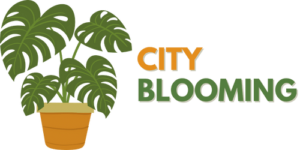Some Ideas on City Blooming You Need To Know
Some Ideas on City Blooming You Need To Know
Blog Article
Some Known Incorrect Statements About City Blooming
Table of ContentsTop Guidelines Of City BloomingThe Greatest Guide To City BloomingIndicators on City Blooming You Need To Know8 Easy Facts About City Blooming Shown4 Simple Techniques For City Blooming
Intrigued in expanding food for sale in the City of Chicago? Below is a list of often asked questions concerning the guidelines and laws that growers need to think about when intending a city farming project.
The zoning change does not customize any type of various other codes handling composting, building licenses, purchasing or leasing City possessed residential property, organization licenses or environmental contamination. There are existing codes that regulate these problems and they stay completely effect and may apply to your task. Community yards are typically had or handled by public entities, public companies or community-based companies and kept by volunteers.
Urban farms grow food that is planned to be offered, either on a not-for-profit or for-profit basis. Due to their commercial function, city farms require a service permit. Yes. An area yard is permitted to sell excess produce that was grown on site if the sales are accessory or subordinate to the garden's main purpose described above.
The 9-Minute Rule for City Blooming
Composting is permitted however just for plant material that is generated and used on website. The amount of compost material can not go beyond 25 cubic lawns at any given time according to the requirements in 7-28-715 of the City's Municipal Code. Yes. Due to the fact that the dirt at many new yard sites requires modifying, compost, soil, wood chips, or other materials can be acquired to create or boost the expanding space - indoor plants.

If a structure permit is needed after that the hoophouse will be thought about an accessory building. You can discover more regarding the structure license demands by getting in touch with the Division of Buildings. The 25,000-square-foot dimension limitation is intended to avoid a single community yard from dominating a given block or interfering with the block's existing domestic or industrial personality.
The restriction does not use to yards found in Public Open Area (POS) areas. Can there be more than one neighborhood yard that is 25,000 square feet on a solitary block? Fence is not required, nevertheless, gardens that have huge car parking locations may be needed to install fence or various other landscaping features.
The Of City Blooming
B1 & B2 areas require that all industrial use activities be carried out inside. Is fencing required for urban ranches? Fences may be needed, along with landscaping and screening, for certain car parking locations and outside job or storage locations depending on location and the certain task taking area.
Yes. Urban ranches need structure permits and zoning authorizations prior to building. Various other kinds of city testimonial might be called for depending upon specific frameworks, tasks, dimension, landscape design, licensing, public health and stormwater monitoring issues. Most of these needs are identified in the task layout or allowing procedure, nonetheless, the candidate might be liable to individually recognize specific licenses or permits that might be needed.
Yes. The kind of license is figured out by what is happening at the website. The Department of Business Matters and Consumer Defense can assist establish the details type of business license that's needed. Yes. Off street parking is required for the majority of business jobs in Chicago. The required variety of car park spaces click over here is based on the variety of staff members functioning on site and not the square video footage of the growing area.
The 9-Second Trick For City Blooming

A city ranch can market compost material created on site, nevertheless, the procedure should conform with the policies in 7-28-715 of the Chicago Municipal Code. Aquaponic systems are enabled inside on metropolitan ranches in many zoning areas.
As much as 5 hives or nests of honey bees might be maintained as an accessory use. Nonetheless, beekeepers need to sign up with the Illinois Division of Farming. To find out more about the suggested zoning modification you may get in touch with the Division of Real Estate and Economic Development, Bureau of Planning and Zoning at 312.744.8563.
Farming in cities and metropolitan locations An urban farm in Chicago. Urban farming describes different methods of growing. https://www.openstreetmap.org/user/cityblooming, handling, and distributing food in urban locations. The term additionally puts on the location tasks of animal husbandry, tank farming, beekeeping, and cultivation in an urban context. Urban agriculture is differentiated from peri-urban farming, which happens in rural locations beside suburban areas.
Fascination About City Blooming
It can involve a movement of organic cultivators, "foodies" and "locavores", who look for to create social media networks based on a shared principles of nature and community holism. These networks can establish using formal institutional assistance, ending up being incorporated into regional community planning as a "change community" movement for sustainable urban development.
In either case, the more straight accessibility to fresh vegetable, fruit, and meat items that may be understood with urban agriculture can enhance food safety and security and food safety and security while decreasing food miles, causing reduced greenhouse gas emissions, consequently adding to environment change mitigation. Several of the very first evidence of urban agriculture originates from Mesopotamia.
Report this page